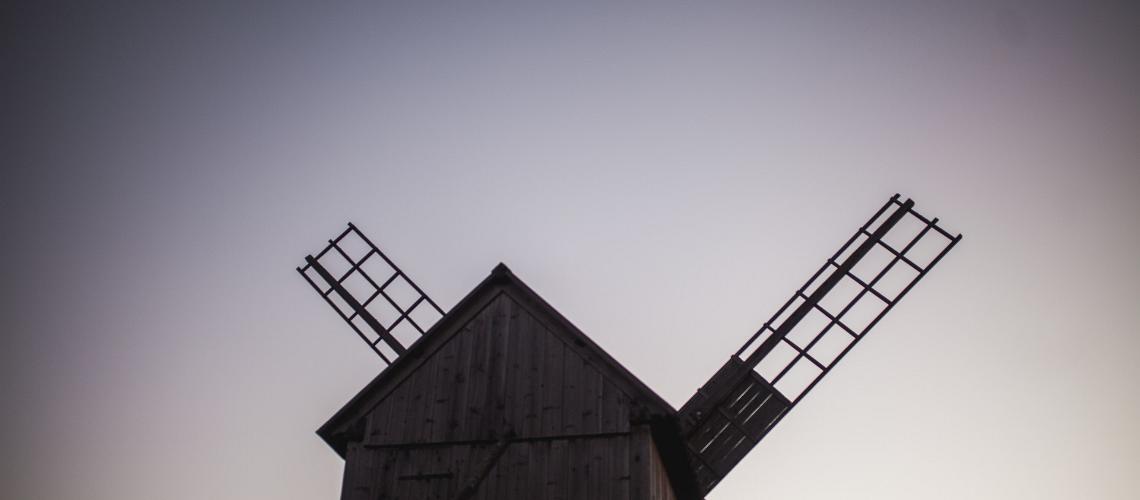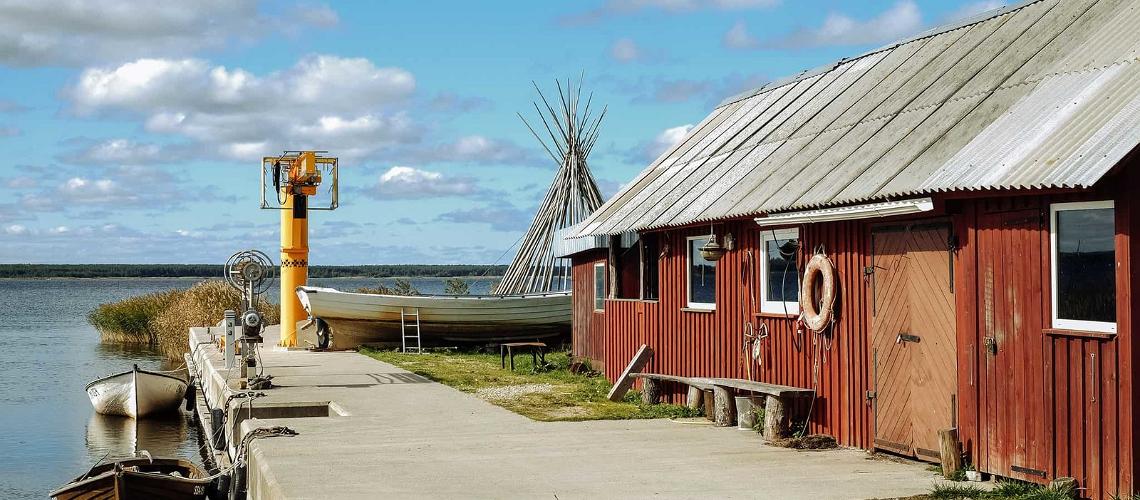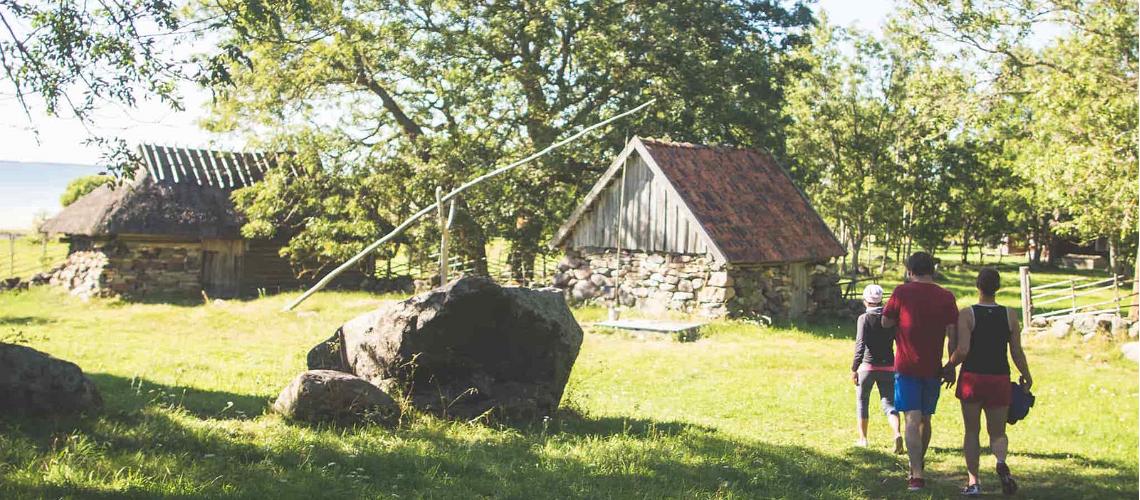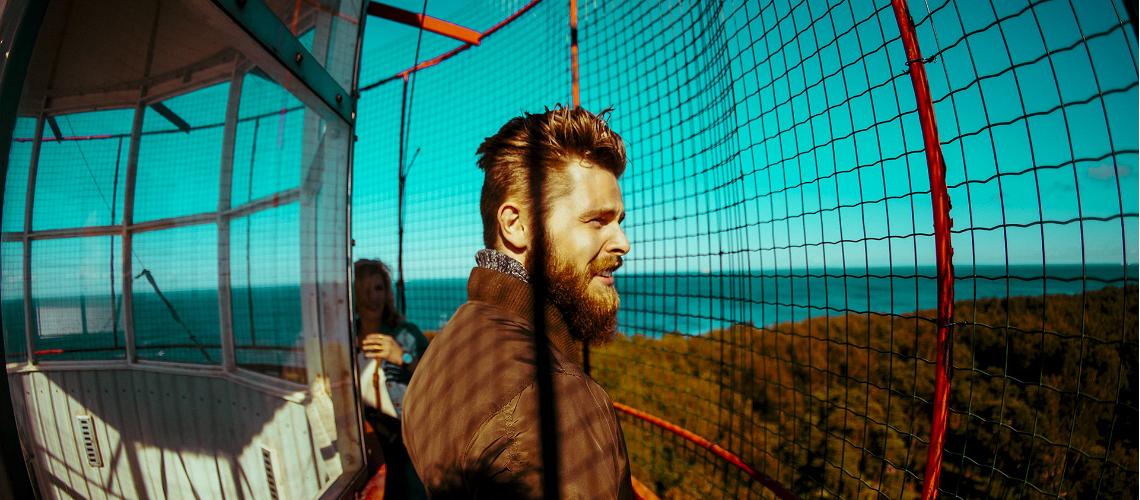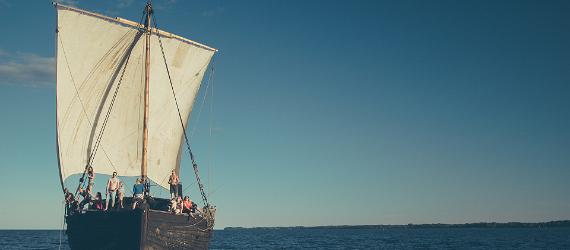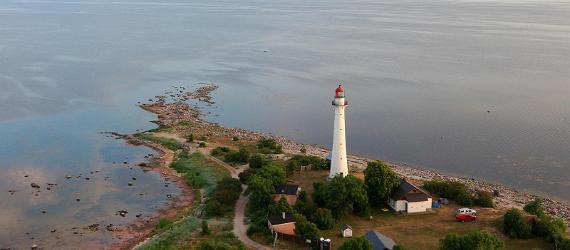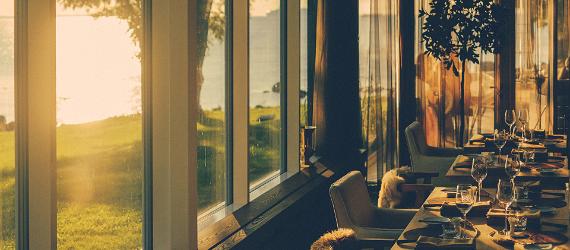Estonia's approximately 2,222 islands have played a defining role in the nation's history and culture. Most lie a short ferry ride into the Baltic Sea and are quiet places for hiking, camping and enjoying seafood delicacies. Relax to the sound of crashing waves and come August, keep your eyes open for seals!
1. Saaremaa
Estonia's largest island is bigger than Luxembourg and its capital Kuressaare is famous for healing mud treatments and bountiful spas, earning the island the nickname "Spaaremaa". Saaremaa is a wellness hotspot with a whopping 8 spas. Sweet and sour bread, windmills and home-brewed beer are just some the staples of Saaremaa
One of the more interesting landscapes of the island is the Kaali meteorite crater. The approximate time of Kaali meteorite fall is 7500-7600 years ago. At the height of 5-10 km meteorite fell apart and came down to the ground in pieces the biggest of which created a big crater with a diameter of 110 m and depth of 22 m and 8 smaller craters.
The capital of the island, Kuressaare has something to offer for everyone, regardless of the season. Visitors can relax and explore the local culture, admire art in different galleries, and walk in the historical episcopal castle.
What to see: Thule Koda, Kaali meteorite craters, Maasi fort castle ruins, Angla windmills, Kuressaare Episcopal Castle and Panga cliff. Take a self-guided family tour.
Getting there: by ferry from Virtsu or Sõru (Hiiumaa) harbours
2. Muhu
Muhu, lying between Estonia's west coast and Saaremaa, is known for its brightly coloured handicrafts. It is very close to Saaremaa island are other, smaller islands such as Abruka and Vilsandi.
What to see: Pädaste manor, Liiva handicraft shop, a self-guided cycling tour, restaurant Alexander, Koguva coastal village, Üügu cliff, St. Catherine's Church with its pagan tombstones.
Getting there: by ferry from Virtsu harbour or by bridge from Saaremaa
3. Hiiumaa
Estonia's second largest island Hiiumaa doesn't have the spas that Saaremaa has, but swimming in salty waves along sandy shores is said to do good for one's health. The second-largest Estonian island is well-know for its historical lighthouses and makes for a great year-round rural getaway.
What to see: Kopu lighthouse, the oldest continually operating in the world, Ristna and Tahkuna lighthouses, Sääretirp point, Hill of Crosses, a self-guided family tour, Tuuletorn, and Military Museum.
Getting there: by ferry from Rohuküla or Triigi (Saaremaa) harbours
4. Vormsi
During a romantic walk or bike ride around the island, you can still see the influence of Swedish seafarers who settled in Vormsi hundreds of years ago in the architecture and place names. Until 1944, the island was inhabited mainly by coastal Swedes, it has the worlds' largest collection of ring crosses. Nowadays around 450 people live on the island. Vormsi is a great holiday destination for those seeking untouched nature as well as for those interested in coastal Swedish history. Vormsi juniper fields, seaside loops, boulders, and lighthouses are best explored on foot or by bicycle.
What to see: the largest set of round crosses in the world at St. Olaf's church cemetery.
Getting there: by ferry from Rohuküla or Sviby harbours
5. Kihnu
The Kihnu traditional way of life has a place on the UNESCO world heritage list; residents are clad in folk clothing, fish, do handicrafts and hold traditional celebrations.
What to see: Kihnu museum, St. Nicholas Church, Kihnu's Own Handicraft Shop, Kihnu lighthouse, fishing tours and bike tours.
Getting there: by ferry from Pärnu or Munalaiu harbours
6. Ruhnu
The sixty-inhabitant island community raises horses, sheep, and cows and, despite its small size, has a weather station, airport, post office, doctor, library, and two shops. The southernmost island in Estonia, Ruhnu is called the pearl of the Gulf of Riga. Ruhnu is home to the oldest wooden building in Estonia and also our oldest surviving wooden sanctuary, a church built in 1644.
What to see: St. Madeline's church, the oldest standing wood building in Estonia, Ruhnu lighthouse and Ruhnu museum.
Getting there: by ferry from Pärnu, Munalaiu or Roomassaare (in Saaremaa) harbours
7. Vilsandi
During high times, Vilsandi was home to over 200 people including fishermen, sailors and seal hunters, but today is home to only one permanent resident – an island guard. A national park was established on the island in 1910.
What to see: Vilsandi lighthouse, built in 1809, and the National Park information point.
Getting there: by ferry from Saaremaa, or by foot if the tide is low.
8. Prangli
Unlike other Estonian islands in the Gulf of Finland, the life on Prangli island has been continuous for 600 years. Prangli island was the only island in the North-Estonia where in Soviet times the inhabitants where allowed to continue to live. Therefore, traditional fishing villages, island customs, coastal dialect and strong community is still preserved even in nowadays.
What to see: Regular Day Trips to Prangli Island, tour of Prangli Island with a virtual tour guide, Tourist information Point at the port, Restaurant Prangli Saare-Resto, St. Laurentius Church.
Getting there: by ferry from Leppneeme port to Kelnase port on Prangli island (more info www.veeteed.com), from Tallinn to Leppneeme port
9. Naissaar
Much like Aegna, Naissaar lies off the coast of Tallinn and all residents were evicted in 1913 when the military took control. Nowadays only one person lives on the islands and a national park has been established. The whole island is under nature protection. Located about 10 km from Tallinn, Naissaar attracts day visitors with its beautiful sandy beach, hiking trails, military heritage, and pop summer festival Nargen. In the southern part of the island, you will find an abandoned Soviet-era mine factory, as well as a legacy narrow-gauge railway from the time when the island was in the possession of the Soviet army.
What to see: central hiking route, Suurupi lighthouses and St. Mary's church
Getting there: By boat from Pirita harbor or Tallinn Fish Market port. There is a regular ferry connection with Naissaar from the end of May to the middle of September from Friday to Sunday. You can also visit the island on your own yacht or boat.
10. Piirissaar
Piirissaar is not located on the Baltic, but rather in lake Peipsi, on the Southeastern border of Estonia. A community of Russian Old Believers live on the 7.8 km2 island farming vegetables and fishing. Piirissaar has two sanctuaries protecting rare species of frogs, birds and plants.
What to see: Old Believers' House Museum
Getting there: by ferry from Laaksaare harbour.
See www.veeteed.com and www.tuulelaevad.ee for ferry route information.















